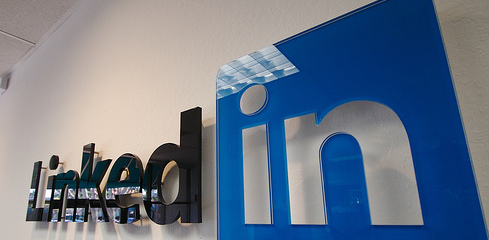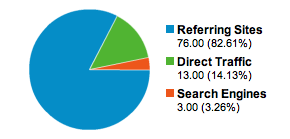There are plenty of steps you can take to sign your company up to a range of social platforms. Maybe you think your customers would appreciate seeing regular blog posts, or a Twitter stream detailing everything your organisation is currently up to.
However, it’s important to see the bigger picture when it comes to online activity.
When your website, social media platforms and any other online activity is integrated then that’s when you’ll see the biggest benefit.
This may seem hard when you have so many different assets across the web. However, there are many simple steps you can take to include social media on your website, as a way of drawing everything together in one place and ultimately making the customer journey as easy and streamlined as possible:
Link to your other assets
 The simplest step you can take is to add links and icons to your website in order to show where your organisation can be found online.
The simplest step you can take is to add links and icons to your website in order to show where your organisation can be found online.
Many people like to find out information from a website, but others like to look at video content, or find out what you’re talking to people about on Twitter, so it’s important they can find these places easily.
There are literally thousands of icons you can chose from, but start from a list, like 33 Social media icon sets for designers and bloggers and pick those that fit best with the look and feel of your site and branding.
Make the most of Facebook
The Facebook ‘Like’ button has now taken over the functionality of the Facebook ‘Share’ button many people used in the past. So, if someone clicks ‘Like’ on one of your posts or pages, a full headline with a blurb and thumbnail will be posted to their wall.

This could mean that your content is seen by even more people and traffic to your site may increase, so it’s important you think about integrating Facebook into your site.
Visit the Facebook Developers page, Facebook for Websites to find out how it could work for you, or get in touch with the Codastar team if you’d like help understanding some of the technical jargon.
Think about widgets
Most blogging platforms and content management systems allow you to add “widgets” to your pages. This could be anything from a piece of text to an RSS feed.
Many companies choose to add a widget that displays recent tweets on their main page or blog – this is what we do here at Codastar, you can see our recent tweets feed over to the right. This not only adds a human element to an otherwise static websites, but it shows that your organisation is clued up when it comes to social media, which many customers now expect from everyone they come into contact with.
SEO benefits
It’s important to remember that it’s not just about adding lots and lots of social functionality. When you’re doing anything with your website, social media or simple web copy, you need to consider SEO.
Adding things to your website that will update regularly will ultimately help when it comes to making sure your website appears higher in search results, as Google likes pages that constantly refresh.
Images via AODDesign and Facebook.
















